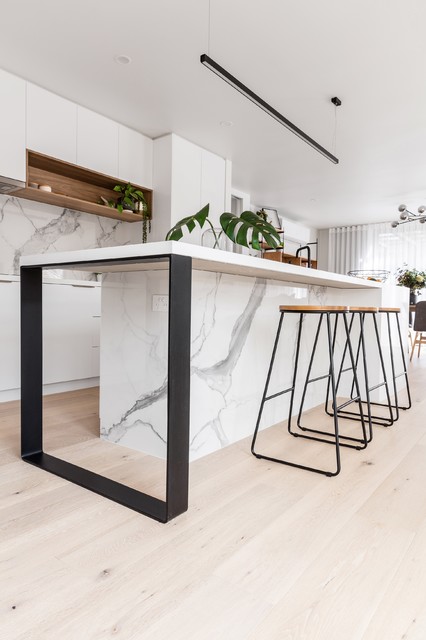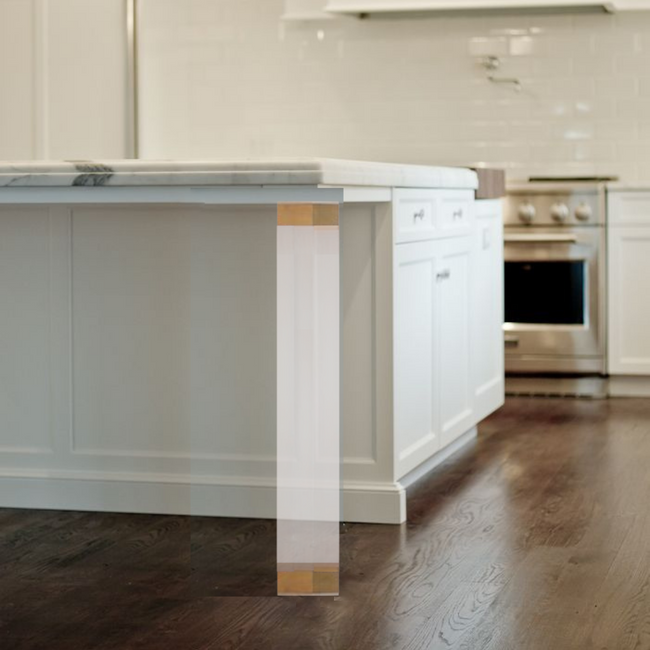Just how to Install a Kitchen Island Leg for Optimum Security and Design
Just how to Install a Kitchen Island Leg for Optimum Security and Design
Blog Article
The Value of a Sturdy Cooking Area Island Leg in Developing a Practical Food Preparation Area
A sturdy kitchen area island leg offers as a fundamental part in establishing a practical food preparation environment, supplying required support for both the counter top and different cooking area tasks. As kitchen areas evolve right into multifunctional locations for food preparation, eating, and socializing, the option of products and layout factors to consider for island legs becomes progressively essential.
Benefits of Sturdy Island Legs
Giving crucial support, tough kitchen island legs play an essential duty in enhancing the performance and longevity of kitchen area islands - kitchen island leg. These legs not only bear the weight of the counter top and any type of added products put on the island, but additionally contribute to the total security of the structure. A well-supported cooking area island makes certain that it continues to be upright and practical, also under heavy usage, which is especially important in active kitchen atmospheres
Moreover, tough island legs can enhance the visual charm of the kitchen. They supply a strong framework that can complement different layout styles, from modern-day to standard. This flexibility permits property owners to tailor their kitchen area islands according to individual taste while guaranteeing that the architectural integrity remains uncompromised.
In enhancement to their helpful function, robust kitchen area island legs can likewise enhance security. Eventually, spending in strong kitchen area island legs is essential for a functional and aesthetically pleasing cooking location.
Products for Kitchen Area Island Legs
When choosing materials for kitchen island legs, durability and visual charm are critical factors to think about,. One of the most typical products consist of wood, steel, and engineered timber, each offering unique advantages.
Hardwood, such as oak, cherry, or maple, is a classic selection because of its stamina and timeless elegance (kitchen island leg). It can hold up against considerable weight and is resistant to put on, making it excellent for high-use kitchen area environments. In addition, wood can be discolored or painted to complement various kitchen area styles
Metal legs, commonly crafted from stainless steel or wrought iron, supply a industrial and modern-day appearance. They are unbelievably solid and can support substantial loads while being immune to dampness and warmth, which is useful in a cooking location. Metal legs can likewise be conveniently cleaned up, boosting their usefulness.

Layout Considerations for Stability
The option of materials for kitchen island legs directly affects the style factors to consider for security. When making a cooking area island, it is paramount to examine the weight-bearing capacity of the selected products. Much heavier products, such as strong wood or metal, typically offer greater stability, particularly under the tension of everyday use.
Additionally, the leg design have to include appropriate geometry to boost stability. A wider base raises the support location, reducing the threat of wobbling or tipping. Consideration must likewise be given to the elevation of the legs; out of proportion leg sizes can result best site in imbalance, jeopardizing the total stability of the island.
Furthermore, the circulation of weight throughout the island is important. Ensuring that the leg placement lines up with the heaviest parts, such as countertops and home appliances, will even more boost security.
Maintenance Tips for Longevity

Depending on the material of the legs-- whether timber, metal, or composite-- ideal cleansing methods need to be employed. Metal legs might call for a light polish to prevent corrosion and maintain their radiance.
Additionally, tightening up screws and screws frequently can make sure security and protect against wobbling. If the cooking area island experiences hefty usage, consider enhancing the legs with added brackets or sustains to enhance resilience. Last but not least, using a safety surface or sealant can safeguard against wetness and spots, extending the life expectancy of the legs. By adhering to these maintenance ideas, homeowners can guarantee their cooking area island legs continue to be useful and durable for years ahead.
Choosing the Right Leg Design
Routine maintenance ensures that cooking area island legs continue to be useful and strong, yet picking the appropriate leg design is similarly crucial for both looks and support. The choice of leg get more style can considerably affect the general design and harmony of your cooking area.

Performance is another essential facet. Thicker legs or those with a sturdy base can support heavier counter tops and devices, improving the island's energy. On the other hand, slim legs might develop a ventilated look, ideal for lighter layouts yet possibly much less encouraging.
Verdict
In summary, the significance of durable kitchen area island legs can not be overstated in the development of a practical cooking area. These legs offer vital support, improve security, and contribute to the general aesthetic of the kitchen area. By meticulously selecting suitable materials and styles, in addition to carrying out correct upkeep techniques, the long life and performance of cooking area islands can be made sure. Inevitably, purchasing durable island legs is basic to accomplishing a risk-free and effective culinary setting.
A tough kitchen island leg serves as directory a fundamental component in establishing a practical food preparation setting, giving essential assistance for both the kitchen counter and various kitchen area tasks.Offering important support, durable kitchen area island legs play an essential function in enhancing the capability and resilience of kitchen area islands. Inevitably, investing in sturdy kitchen area island legs is important for a functional and visually pleasing cooking area.
Factor to consider needs to likewise be offered to the height of the legs; out of proportion leg lengths can lead to inequality, jeopardizing the total stability of the island.
Wood legs offer heat and a classic look, while metal legs supply a modern-day and commercial feel.
Report this page